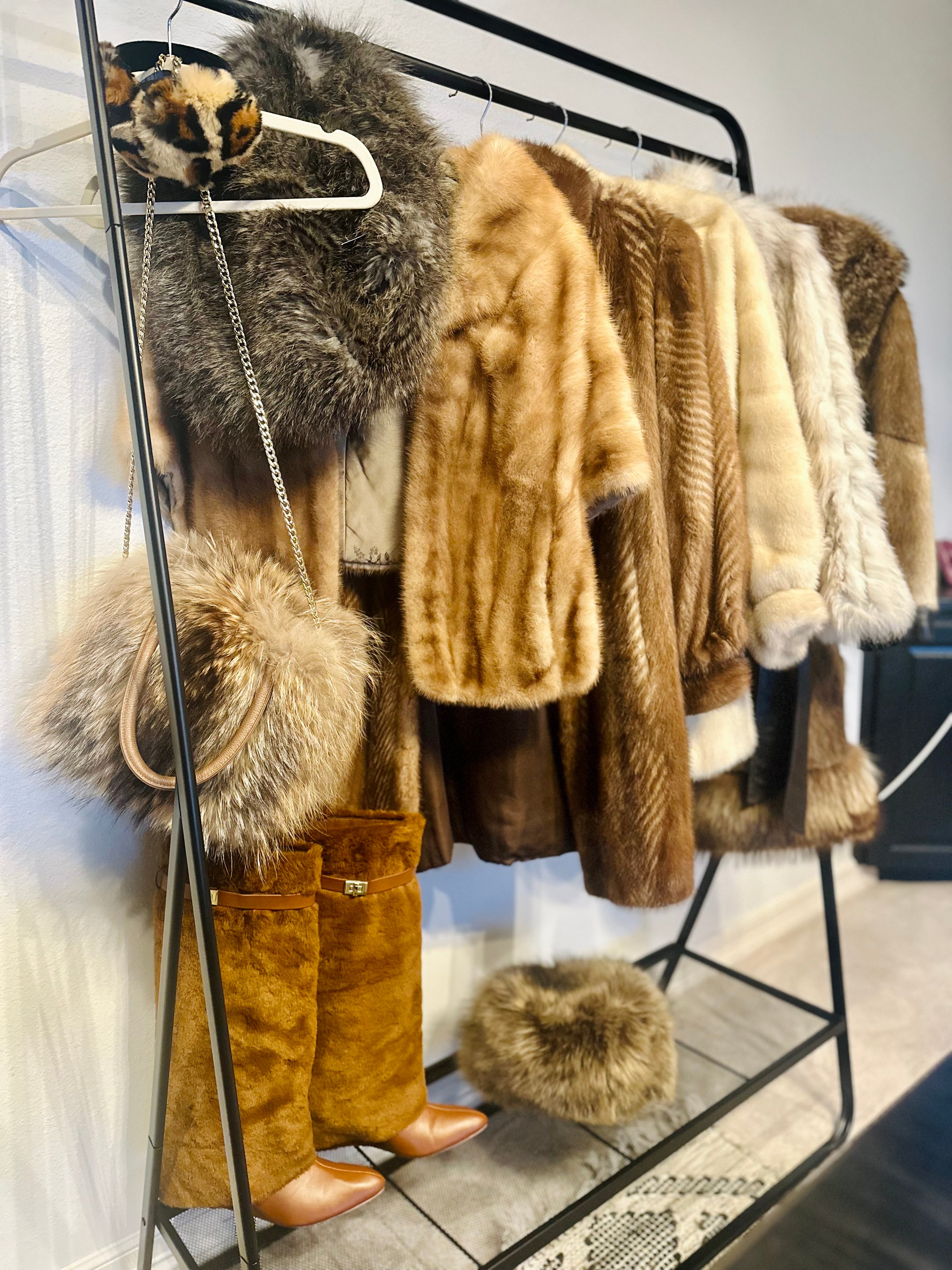Introduction: The debate between faux fur and real fur coats has been a long-standing one, with fashion enthusiasts and animal rights activists on opposite sides of the spectrum. Both types of fur have their unique qualities, but they also come with their own set of pros and cons. In this blog post, we will explore the key differences between faux fur and real fur coats, allowing you to make an informed choice that aligns with your values and preferences.
Faux Fur Coats:
Pros:
-
Cruelty-Free: Faux fur is made from synthetic materials like acrylic and polyester, making it an ethical choice for those who oppose animal cruelty. No animals are harmed in the production of faux fur coats, making them a compassionate option.
-
Affordable: Faux fur coats are generally more budget-friendly than their real fur counterparts. This affordability allows a broader range of consumers to enjoy the luxury and warmth of fur-like outerwear without breaking the bank.
-
Variety of Colors and Styles: Faux fur can be manufactured in a wide range of colors and styles, allowing for creative and diverse fashion choices. Whether you prefer a classic look or something more unique, faux fur offers versatility.
-
Easy Care: Faux fur is often easier to care for than real fur. It is typically machine washable and less prone to damage from moisture, making it a practical choice for everyday wear.
Cons:
-
Less Durability: Faux fur coats may not be as durable as real fur coats. Over time, the synthetic fibers can wear down, leading to a less luxurious appearance.
-
Environmental Impact: While faux fur is cruelty-free, it is not entirely environmentally friendly. The production of synthetic materials can have negative impacts on the environment, such as the release of microplastics during washing.
Real Fur Coats:
Pros:
-
Natural Insulation: Real fur is known for its exceptional insulation properties, keeping you incredibly warm in cold weather. It's a superb choice for extreme cold conditions.
-
Luxurious Appearance: Real fur has a timeless and luxurious look and feel that is hard to replicate with synthetic materials. It often carries a certain status and elegance.
-
Longevity: With proper care, real fur coats can last for decades, making them an investment piece that can be passed down through generations.
Cons:
-
Ethical Concerns: The biggest ethical issue surrounding real fur is the treatment of animals in the fur industry. Many animals, including mink and foxes, are raised in captivity and subjected to inhumane conditions before being killed for their fur.
-
High Cost: Real fur coats come with a hefty price tag due to the labor-intensive process of fur harvesting and preparation. This makes them less accessible to many consumers.
-
Maintenance: Real fur coats require special care and storage to maintain their quality. They are sensitive to moisture and must be professionally cleaned, adding to the overall cost of ownership.
Another Thing to Consider:
For me personally, I try to meet in the middle. I only purchase vintage furs. Furs of animals that have already been killed and worn by amazing women who have lead extraordinary lives. It is so fun to open those fur coats and see the initials of the women who have own them and then of those of whom they've been passed down too. Stitching in your initials to your fur coat, might be my most favorite part of owning a fur coat. I look forward to passing a few down to my daughters. It will be beautiful to see them sew in their own initials under mine, and the women who donned it before me.
Buying vintage furs, also known as pre-owned or second-hand fur garments, can be a responsible and ethical choice for several reasons. Here are some compelling reasons why it's often considered best to buy vintage furs:
-
Sustainability: One of the most significant advantages of purchasing vintage furs is its sustainability. By buying a vintage fur coat, you are not contributing to the demand for new fur production, which can be harmful to the environment. The fashion industry is a significant contributor to pollution, and choosing vintage furs helps reduce the industry's carbon footprint.
-
Ethical Considerations: Vintage fur coats have already been produced, often decades ago. By purchasing a vintage fur, you are not directly supporting the fur industry's practices, which are often criticized for their treatment of animals. This allows individuals to enjoy the beauty and warmth of fur without participating in the unethical aspects of the fur trade.
-
Preservation of History and Craftsmanship: Many vintage fur coats are works of art, showcasing exquisite craftsmanship and design from a bygone era. Buying vintage furs helps preserve these pieces of history and honors the skilled artisans who created them. It allows you to own a unique and often heirloom-quality garment.
-
Unique and Timeless Style: Vintage furs offer a unique and timeless style that stands out in today's fashion landscape. These pieces often feature designs and fur types that are no longer in production, making them distinctive and a statement of personal style.
-
Value for Money: Vintage fur coats are typically more affordable than new fur garments. You can find high-quality vintage furs at a fraction of the cost of purchasing a new fur coat of similar quality. This value for money is especially appealing to those who appreciate fur's warmth and luxury but have budget constraints.
-
Reducing Waste: Buying vintage furs contributes to reducing textile waste. When you buy second-hand clothing, you extend the life of the garment and prevent it from ending up in a landfill, promoting a more sustainable approach to fashion.
-
Customization and Repurposing: Vintage furs can often be altered, repurposed, or restyled to fit your specific preferences. This allows for personalization and the creation of a truly unique piece of outerwear.
-
No New Animal Harm: By choosing vintage furs, you are not contributing to the demand for new fur production and, therefore, not supporting the raising and killing of animals for their fur. This aligns with the values of individuals who are concerned about animal welfare.
Conclusion: The choice between faux fur and real fur coats ultimately comes down to personal values, budget, and style preferences. Faux fur offers a humane and budget-friendly option with a wide variety of styles, while real fur provides unparalleled warmth and luxury but raises ethical concerns and comes at a higher cost.
When making your decision, consider your stance on animal rights, environmental impact, and your fashion priorities. Whichever choice you make, remember that fashion can be both stylish and responsible, allowing you to express your individuality while aligning with your values.
XX
Lana



Title